Postcard Paintings
| Gallery
William Wegman
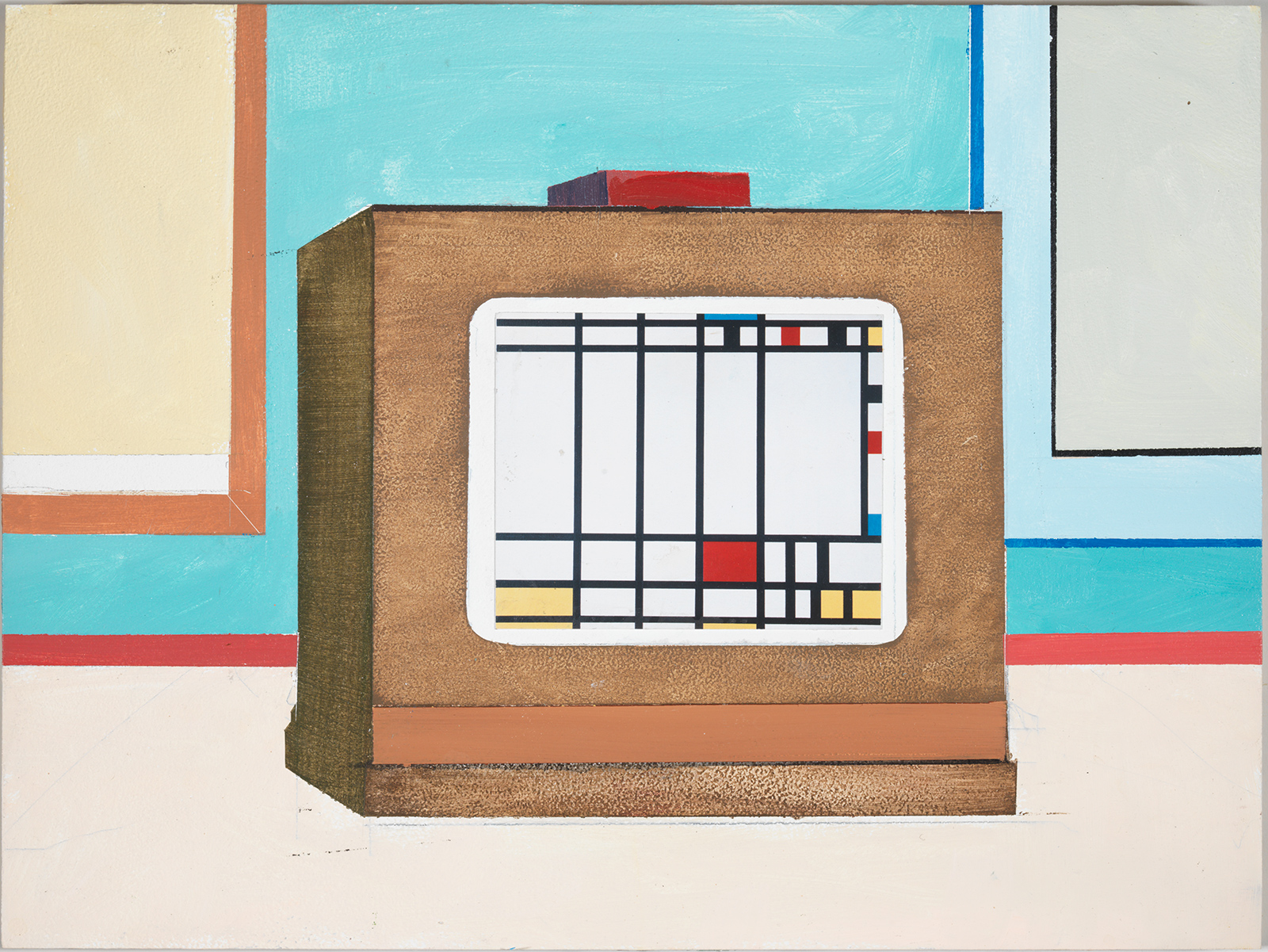
Postcard Paintings
William Wegman
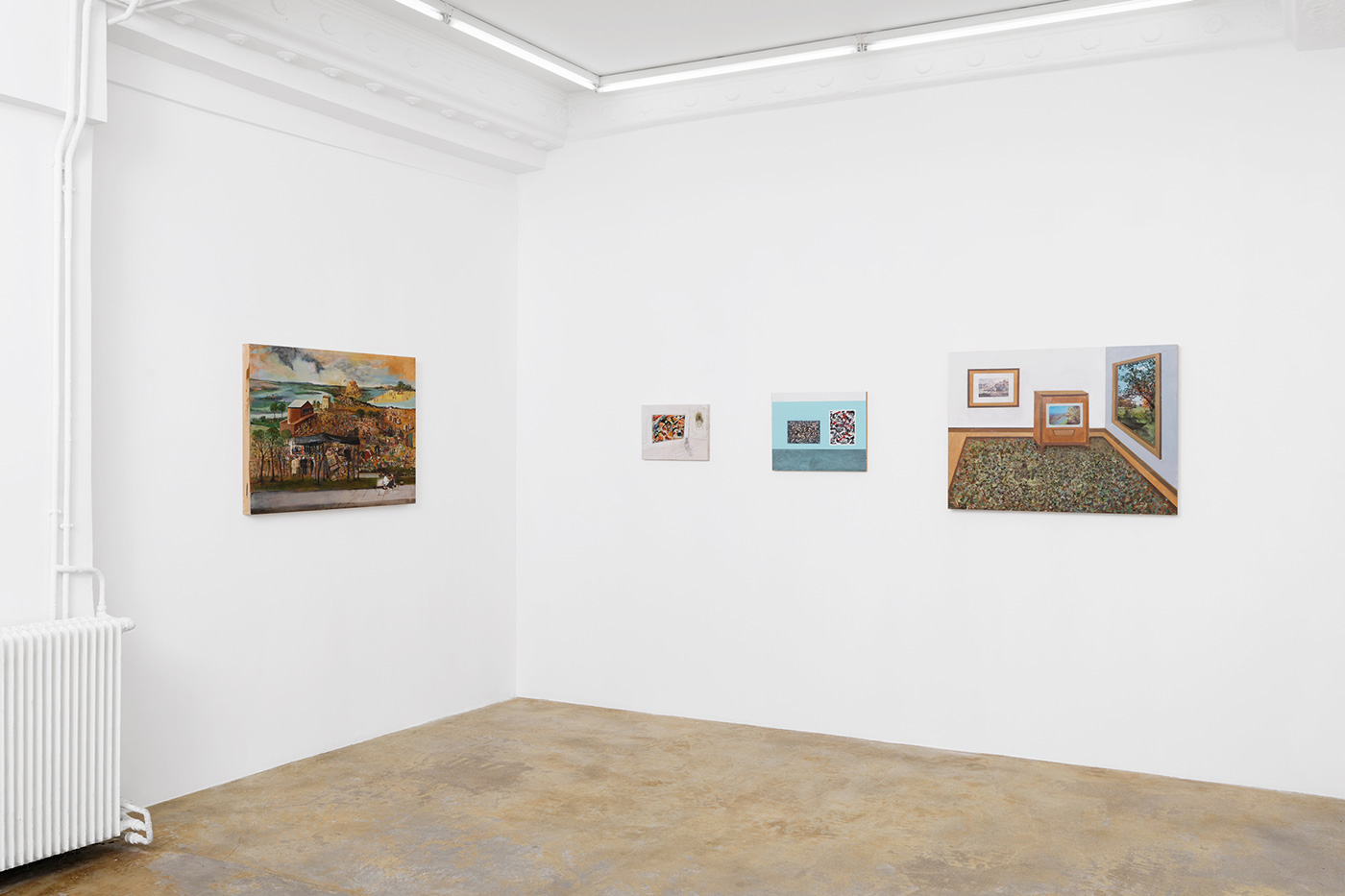
Postcard Paintings
William Wegman
Exhibition view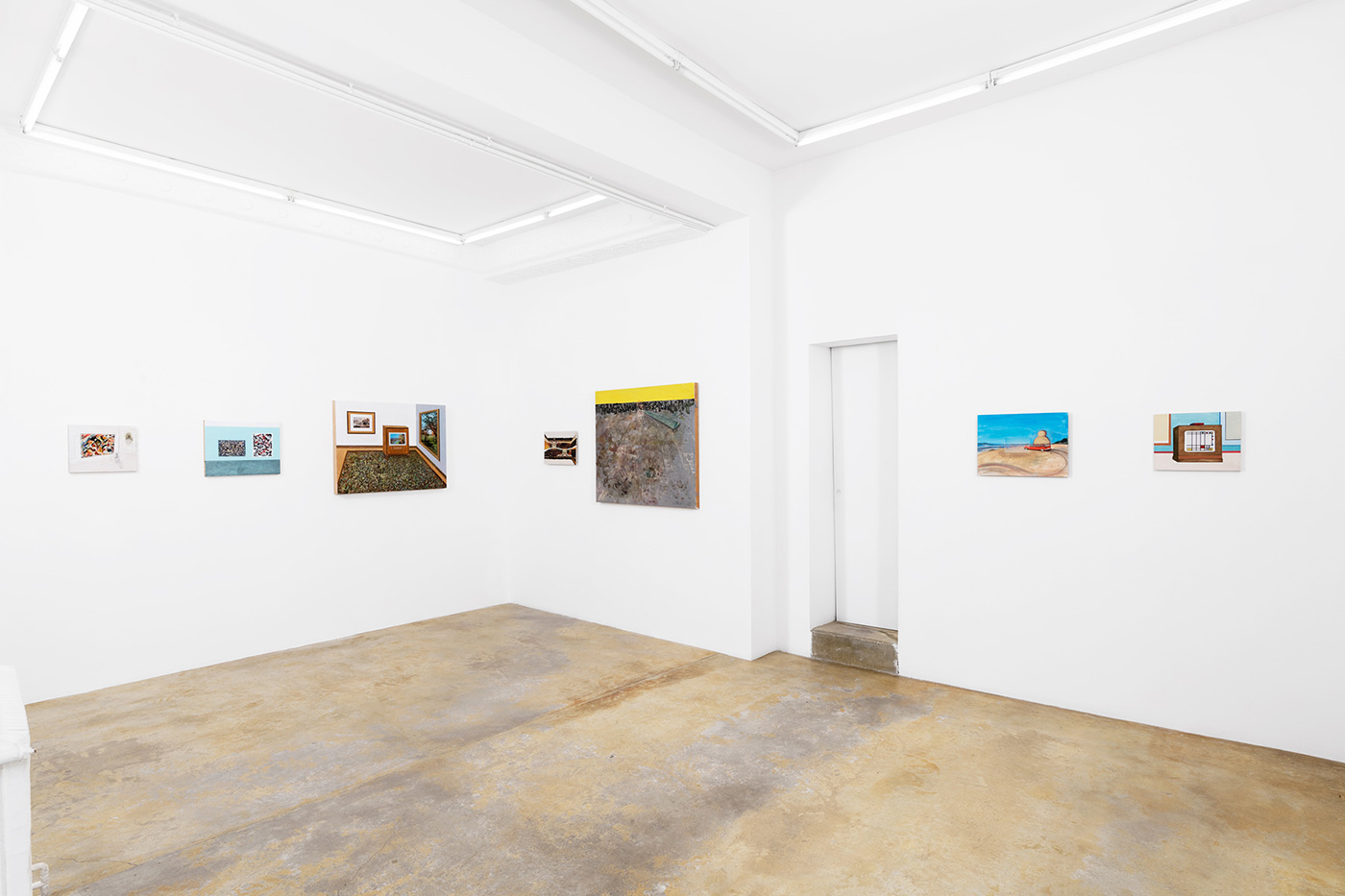
Postcard Paintings
William Wegman
Exhibition view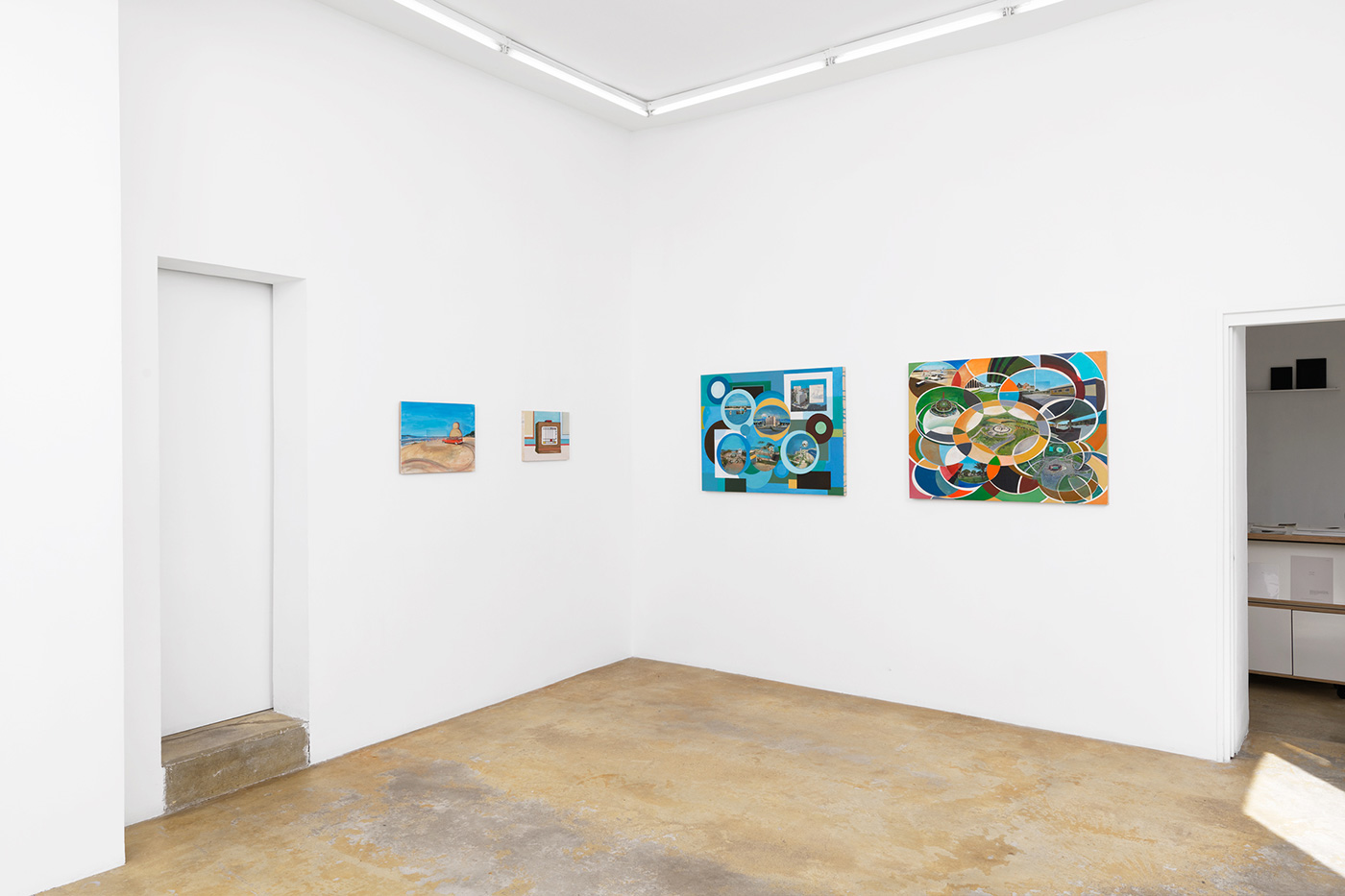
Postcard Paintings
William Wegman
Exhibition view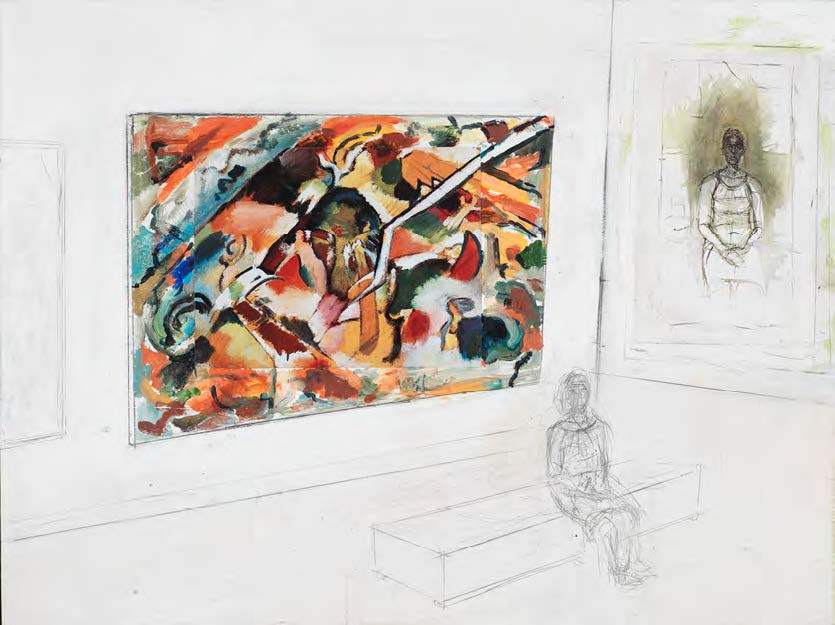
Oil and Postcard on Wood Panel
Unique artwork
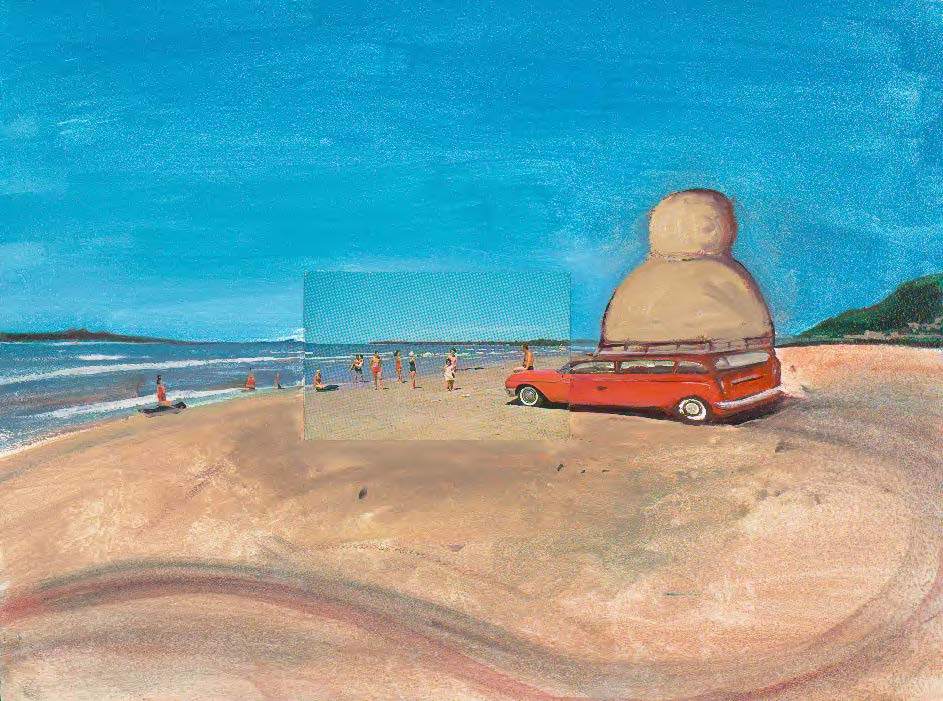
Oil and Postcard on Wood Panel
Unique artwork
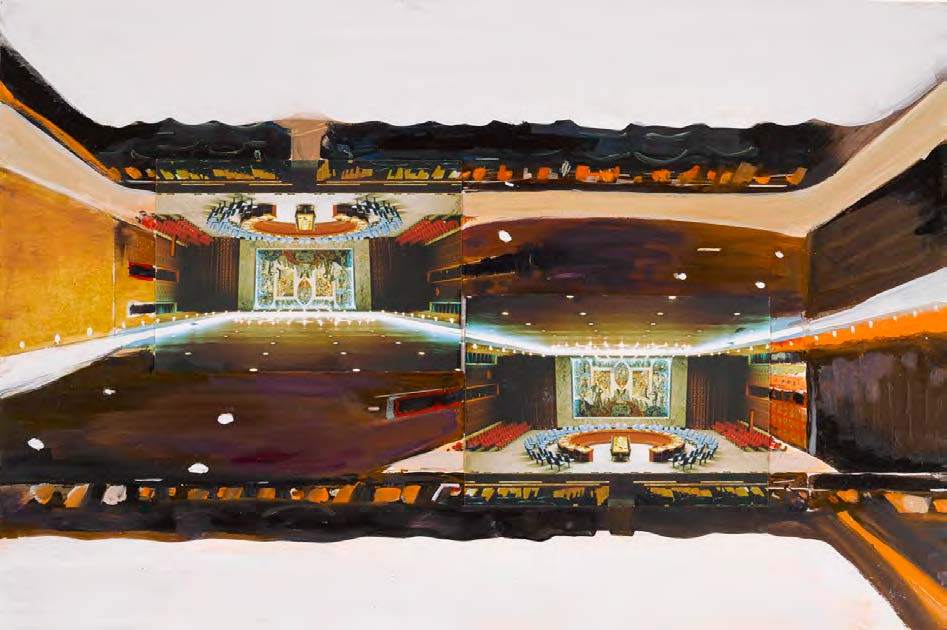
Oil and Postcards on Wood Panel
Unique artwork
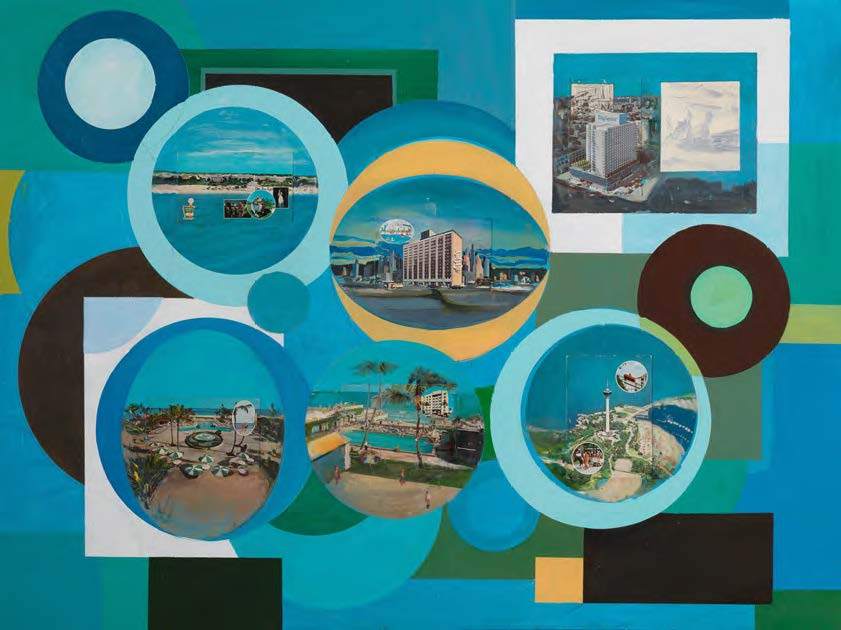
Oil and Postcards on Wood Panel 30 x 40 x 1 5/8 inches
Unique artwork
FR
Wegman, photogénie et retoucheur surdoué
Comme en son temps Walker Evans, qui en collectionnait et voulut en fabriquer, Wegman collectionne et publie des cartes postales. Ses photographies, comme celles d’Evans après sa mort, ont été popularisées par la diffusion massive de produits dérivés, comme justement des cartes postales, des calendriers, des agendas et albums pour enfants. Mais dans le secret de l’atelier, Wegman poursuit une oeuvre qui ne demande rien à personne et exige énormément de son imagination. Et c’est là qu’interviennent les cartes postales des autres. Comme un peintre collectionne les tubes de couleurs, Wegman s’est mis à les collectionner pour les utiliser. Il en a de vieilles valises en carton remplies. Et il s’en sert de point de départ pour des tableaux de formats variés, dont même les plus grands ne peuvent se regarder de très loin. Il s’en sert aussi comme point d’arrivée, car elles font beaucoup voyager.
Ces tableaux de cartes postales détournent les images choisies en prolongeant tel paysage, en le mettant en relation avec d’autres, en utilisant parfois deux fois la même carte placée tête-bêche et en inventant une histoire dont la cohérence dépend surtout des efforts de l’artiste pour préserver une certaine vraisemblance scénographique et perspective. Ce ne sont pas des cadavres exquis, ce sont des collages délectables en même temps que des peintures appliquées à se contorsionner dans tous les sens. Tous les chemins y mènent n’importe où. Collages et peintures réunis font de ces oeuvres souvent formellement Kitsch des tableaux poétiques qui, bien sûr, font sourire, c’est fatal chez Wegman, et qui étonnent par une profondeur que, seules, ne suffisent pas à leur donner leurs vertigineuses lignes de fuites.
On connait Wegman vidéaste, pionnier et maître incontestable, même s’il est difficile de prendre au sérieux ce qui provoque le rire.
On connaît Wegman photographe, mais je n’ai pas le temps d’entrer ici dans les détails d’une oeuvre complexe, qui s’est constamment renouvelée et dont les applications commerciales ont troublé l’appétence du public raffiné mais versatile des galeries d’art contemporain. N’empêche, de bout en bout, que voulez-vous ? ses photos font sourire.
Et c’est impardonnable.
On connaît moins l’excellent dessinateur, si précis dans l’expression de ses pénétrantes réflexions sur la perception. Mais une telle précision alliée à une telle concision seraient admirables, si les dessins n’étaient aussi drôles qu’intelligents. Et ceci est infernal.
On connaît moins bien Wegman peintre que photographe mais un peu mieux Wegman peintre que dessinateur. Disons en deux mots qu’il a eu sa période bad puis sa période, comment dire… impressionniste quasi abstraite ? puisque Wegman est un artiste typiquement américain. La première période est drôle et débraillée, la seconde est drôle et excessivement raffinée. On n’échappe pas à la fatalité. C’est toujours le même diagnostic.
Les "Postcards Paintings" sont conceptuellement entre les dessins et les peintures. Elles sont drôles aussi. Je m’empresse de le dire. Certains en seront consternés, les pauvres ! La photographie n’y est plus qu’une image trouvée, imprimée à des milliers d’exemplaires, pourtant ces peintures sont la continuation des "Altered Photographs" du milieu des années 70, photos sans intérêt que Wegman, dans une période de doute et d’abondance, entassa dépité jusqu’au moment où il les rendit remarquables en les massacrant, en les incisant, les découpant, les griffonnant avec le meilleur de la verve qu’il a en inépuisable réserve. Les Postcards Paintings sont moins vandales, plus baroques, elles empruntent à plusieurs répertoires graphiques et picturaux stéréotypés, comme les cartes postales elles-mêmes. Elles ont l’efficacité de l’illustration à l’américaine et elles évoquent un passé middle class, un paradis impossible mais prétendument à la portée de tous. L’enfer, c’est les autres et le paradis, c’était avant.
Avec ses oeuvres jamais vues en France, on découvrira en Wegman un architecte éclectique, un paysagiste audacieux, un urbaniste tantôt futuriste tantôt nostalgique, un adepte de la "mosaïculture", un scénariste sans complexe, un amateur d’art boulimique et éclectique, un touriste affamé… Il va beaucoup nous manquer pour le vernissage, car les valises en carton ne sortent jamais et il voyage surtout dans son atelier.
Maître-chien une partie de son temps, il n’est ni un cynique ni un artiste de niche. Il a l’insigne mérite, et c’est une singularité difficile à porter, d’être populaire au point de toucher un très large public non averti et d’être à la fois un artiste d’artistes (son premier collectionneur fut Edward Ruscha), en tout cas pour tous ceux, amis ou non des animaux, qui ne dédaignent pas qu’une oeuvre d’art puisse faire sourire — les autres peuvent toujours ricaner, tant pis pour eux ! Rabat-joie, prudes sectateurs du bon goût sévère, vestales et gardes suisses de la plus distinguée des conventions, superficiels démonstrateurs d’ostentatoire rigueur, zélateurs du dernier cri et du premier vagissement, passez votre chemin.
Je ne cesse d’admirer William Wegman depuis que par chance j’ai croisé son oeuvre. — Un critique d’art, un historien, un conservateur assermentés n’écrira jamais dans un style aussi direct, mais on m’a demandé de faire court : d’aller droit au but. Je ne suis pas servile, je suis admiratif.
Frédéric PAUL
Frédéric Paul est critique d’art, conservateur aux collections contemporaines du Centre Pompidou, MNAM CCI. Il a publié au Frac du Limousin, qu’il dirigea et où il l’exposa en 1997 et 1991, deux ouvrages de référence sur William Wegman : "William Wegman, dessins : 1977-1997", en 1997, "William Wegman, l’oeuvre photographique: 1969-1976", en 1991. En 2004, il l’exposa à nouveau, dans une perspective plus large, au Domaine de Kerguéhennec, qu’il dirigea.
EN
Wegman, photo-genie and accomplished retoucher
Like Walker Evans in his time, William Wegman is a devoted collector of postcards. His own photographs, like the photographs of Evans, have become the subjects of postcards and books and calendars, part of our popular culture. In the privacy of his studio, however, Wegman creates works that don’t ask anything from anyone but demand a great deal from his imagination. It is here that the postcards of others come into play. In the same way that a painter collects tubes of colors Wegman collects postcards. He has vintage suitcases filled with them. These postcards serve as the starting point for paintings of varied formats, even the largest of which cannot be looked at from a distance. They begin and end with small format postcard images and what happens in between them is a trip.
In Wegman’s postcard paintings a chosen postcard is quickly turned into something new. Landscapes are extended and connected to other images, sometimes inverted, the same card or slightly different versions of the same card may appear side by side. You need to look twice. Juxtapositions create a story whose coherence depends above all on the artist’s efforts to preserve a certain scriptural and perspective plausibility. The postcard paintings are not exquisite corpse exercises but delightful collages in which Wegman’s painted additions contort perception in every possible way. All roads lead to who knows where. Collage and painting combine to turn what might sometimes appear to be kitsch subject matter into poetry. The paintings surprise with their depth of field and often dizzying vanishing points but they of course also make people smile – inevitable with a Wegman work.
We know Wegman the video-maker, an unquestionable pioneer and master, even if it is sometimes hard to take seriously anything that can make you laugh so much.
We know Wegman the photographer. Whose complex body of work is constantly in the process of being reinvented and whose commercial applications have disturbed the refined but fickle appetite of the sophisticated public of contemporary art galleries. But you expect this from Wegman. Everything about his work makes you smile and for this
he is often not forgiven.
We know less the excellent draftsman, so precise in the expression of his reflections on life and on perception. Precision of this kind combined with such insight would be admirable if the drawings weren’t as amusing as they are intelligent. And this is diabolical.
We know Wegman less as a painter than as a photographer but a bit more Wegman as a painter than as draftsman. As a painter he had his bad period and – how can we put it – his impressionist almost abstract period. But Wegman is a typically American artist and even this first period was self-consciously “bad” an effort to at the same time reject and partake in the history of painting. The first period is amusing and sloppy, the second is amusing and excessively refined.
The "Postcards Paintings" are conceptually between drawings and paintings. They are also amusing. I hasten to say so. Some people will be dismayed by them and too bad for them! Photography is no longer anything but a found image, printed in thousands of copies, these paintings however are something unique, a continuation of Wegman’s "altered photographs" from the mid-1970s. During a period of doubt, with money suddenly for printing, Wegman amassed a body of photographs which much to his dismay he found held no interest for him. Then the moment came when he realized that by destroying these photographs – incising them, cutting them up, painting and drawing on them with the audaciousness that he has an inexhaustible store of – he could save them. The "Postcards Paintings" are less vandalized, more baroque. They borrow from several stereotyped graphic and pictorial repertories, like the postcards themselves. They have all the efficacy of the American-style illustration and they evoke a middle-class past, an impossible paradise but one that is within reach of everyone. Hell is other people and paradise was before.
With these works that have never before been seen in France, we discover in Wegman an eclectic architect, a daring landscape designer, a sometimes futuristic sometimes nostalgic urban planner, an expert in "mosaïculture", a scriptwriter with no inhibitions, an amateur gastronome, a connoisseur of the strange, an ever-curious tourist… He will be very much missed by us at the preview showing as his cardboard suitcases never go outside and he above all travels in his studio.
A dog wrangler part of the time, Wegman is neither a cynic nor a niche artist. He has the remarkable merit – and it is a singularity that is hard to wear – of being popular to the point of reaching a very large public and being at the same time an artists’ artist (his first collector was Edward Ruscha), admired by all those, friends of animals or not, who are not adverse to a work of art that can make you smile – the others can always snicker, too bad for them! Killjoys, prudish slaves to good taste guardians at the gate of the most distinguished of conventions, superficial demonstrators of ostentatious rigor, zealots of the dernier cri and the first cry, go elsewhere.
From the moment I came across his work I have never stopped admiring William Wegman. Official art critics, historians and curators will never write in a style as direct as this but I was asked to be brief: to go straight to the point.
I am not servile, I am admirative.
Frédéric Paul
Frédéric Paul is an art critic and curator of contemporary collections at the Centre Pompidou, MNAM CCI. He published at the Limousin Frac, which he directed and where he exhibited him, two reference works on William Wegman: "William Wegman, Photographic Works: 1969-1976", in 1991, and "William Wegman, drawings: 1977-1997", in 1997. In 2004, he once again exhibited his work in a broader perspective, at the Domaine de Kerguéhennec, which he directed.